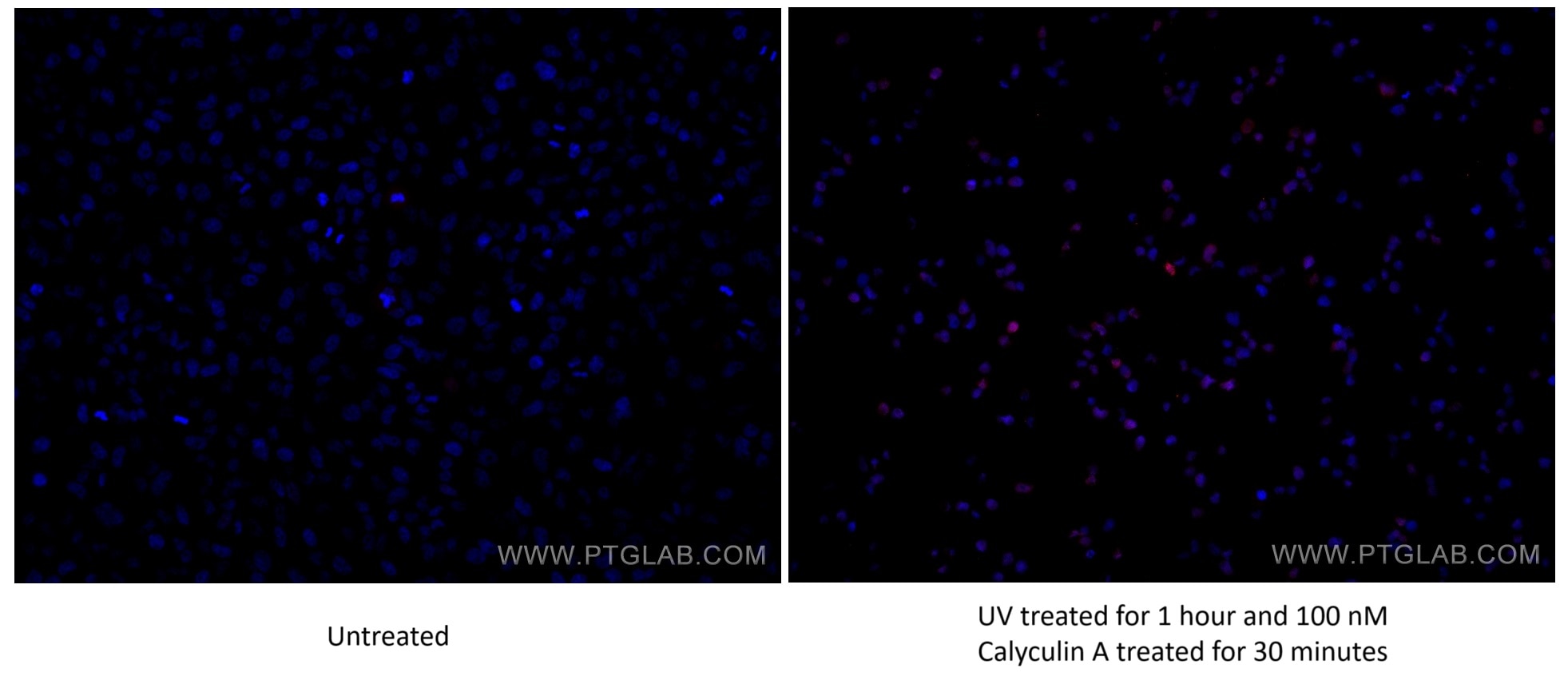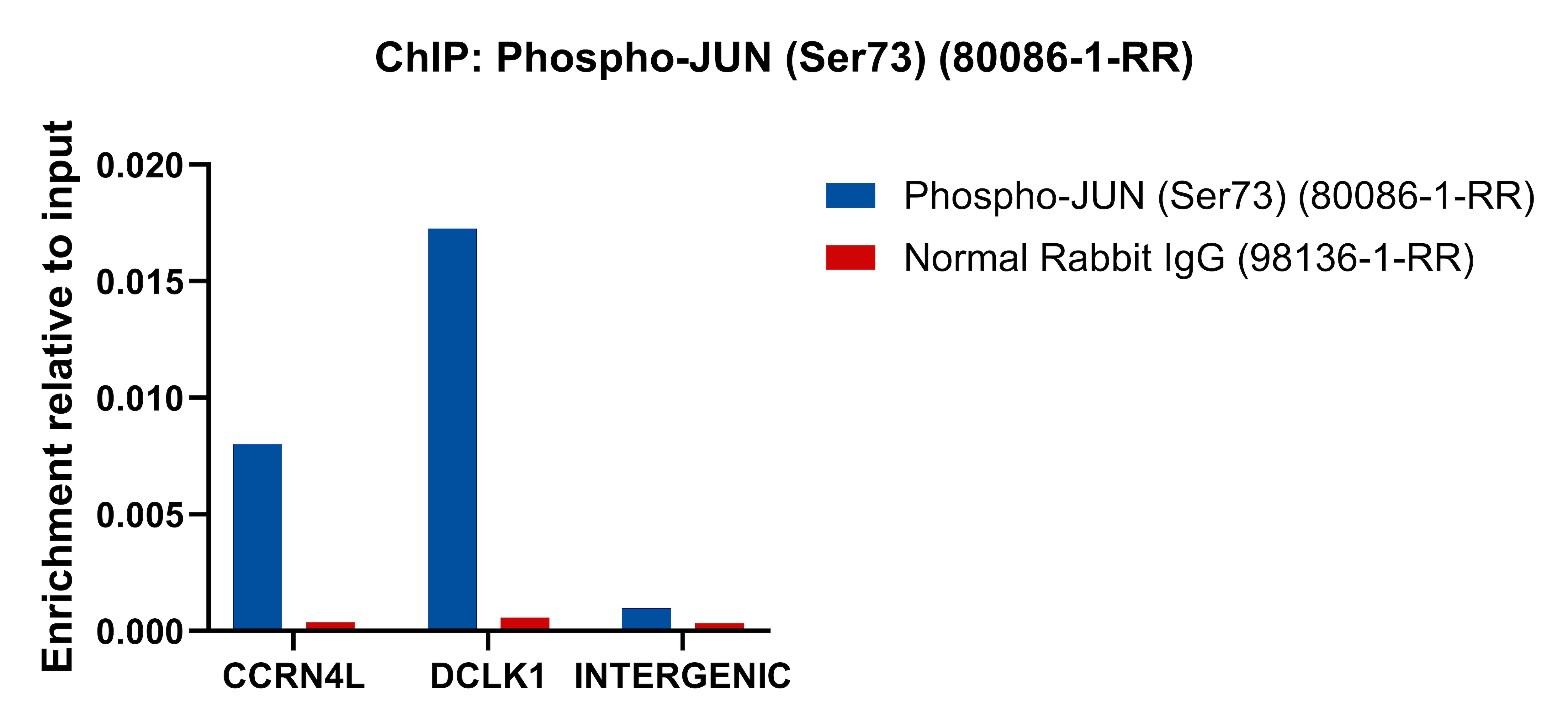Anticorps Recombinant de lapin anti-Phospho-JUN (Ser73)
Phospho-JUN (Ser73) Recombinant Antibody for WB, IF/ICC, FC (Intra), Indirect ELISA, ChIP-qPCR
Hôte / Isotype
Lapin / IgG
Réactivité testée
Humain, souris
Applications
WB, IF/ICC, FC (Intra), Indirect ELISA, ChIP-qPCR
Conjugaison
Non conjugué
CloneNo.
4A18
N° de cat : 80086-1-PBS
Synonymes
Galerie de données de validation
Informations sur le produit
80086-1-PBS cible Phospho-JUN (Ser73) dans les applications de WB, IF/ICC, FC (Intra), Indirect ELISA, ChIP-qPCR et montre une réactivité avec des échantillons Humain, souris
| Réactivité | Humain, souris |
| Hôte / Isotype | Lapin / IgG |
| Clonalité | Recombinant |
| Type | Anticorps |
| Immunogène | Peptide |
| Nom complet | jun oncogene |
| Masse moléculaire calculée | 331 aa, 36 kDa |
| Poids moléculaire observé | 42-45 kDa |
| Numéro d’acquisition GenBank | BC068522 |
| Symbole du gène | JUN |
| Identification du gène (NCBI) | 3725 |
| Conjugaison | Non conjugué |
| Forme | Liquide |
| Méthode de purification | Purification par protéine A |
| Tampon de stockage | PBS only |
| Conditions de stockage | Store at -80°C. 20ul contiennent 0,1% de BSA. |
Informations générales
JUN, the most extensively studied protein of the activator protein-1 (AP-1) complex, is involved in numerous cell activities, such as proliferation, apoptosis, survival, tumorigenesis and tissue morphogenesis (PMID: 22180088). JUN is a transcription factor that recognizes and binds to the enhancer heptamer motif 5'-TGA[CG]TCA-3'. It promotes activity of NR5A1 when phosphorylated by HIPK3 leading to increased steroidogenic gene expression upon cAMP signaling pathway stimulation. JUN is a basic leucine zipper (bZIP) transcription factor that acts as homo- or heterodimer, binding to DNA and regulating gene transcription (PMID: 9732876). In additon, extracellular signals can induce post-translational modifications of JUN, resulting in altered transcriptional activity and target gene expression (PMID:8464713). More over, it has uncovered multiple layers of a complex regulatory scheme in which JUN is able to crosstalk, amplify and integrate different signals for tissue development and disease. Jun is predominantly nuclear, ubiquitinated Jun colocalizes with lysosomal proteins (PMID: 15469925). This antibody is raised against synthetic phosphopeptide corresponding to residues surrounding Ser73 of human JUN, which can detect the bands around 42-45 kDa.









